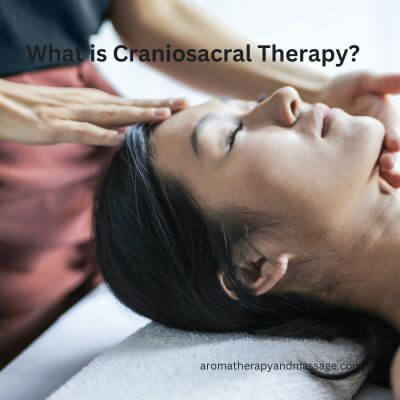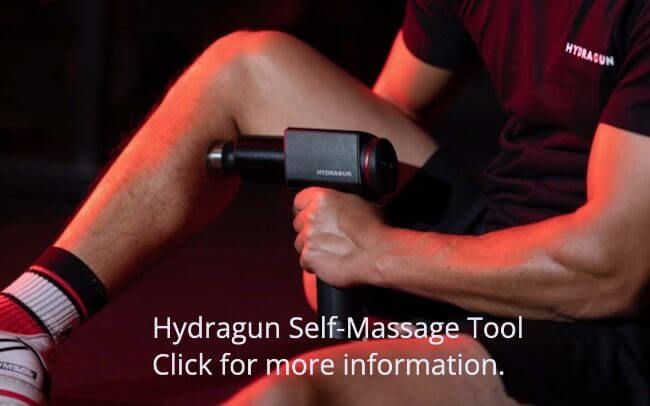CranioSacral Therapy (CST) uses gentle touch to evaluate and enhance the functioning of the body’s craniosacral system. This system produces, circulates, and reabsorbs cerebrospinal fluid (CSF), a liquid that surrounds your brain and spinal cord to cushion, nourish, and protect them.
In addition to the CSF, the craniosacral system includes the cranium (skull), sacrum, coccyx, meninges (membranes that cover and protect your brain and spinal cord), and structures involved in producing and circulating the CSF.
How Does CranioSacral Therapy Work?
The inflow and outflow of cerebrospinal fluid in the craniosacral system has a rhythmic pulse called the craniosacral rhythm.
As you lie, fully clothed, on a comfortable, padded table, the CST practitioner uses gentle touch to listen and evaluate that pulse, sense restrictions in your craniosacral system, and determine how they affect other areas of your body.
Experienced practitioners can feel the craniosacral rhythm anywhere on your body and quickly gain valuable information about the rhythm’s rate, amplitude, symmetry, and quality. Lack of, or an asymmetrical, craniosacral rhythm can indicate problems or restrictions throughout the body.
The practitioner then uses gentle touch to encourage movement in restricted areas. The aim is to restore the symmetrical craniosacral motion to problem areas, allowing the body to self-correct and heal itself.
A typical CranioSacral Therapy session lasts about an hour.
Development of CranioSacral Therapy
The basis of CST traces back to the early 1900s. Osteopathic physician Dr. William Sutherland proposed the controversial idea that bones in the skull can move slightly, contrary to the belief that those bones fuse and become static after a certain age. Sutherland’s research led to what later came to be called cranial osteopathy.
In the early 1970s, during surgery, osteopathic physician John E. Upledger saw the rhythmic movement of the craniosacral system. After studying the work of Sutherland and principles of cranial osteopathy, Upledger worked to scientifically confirm the mobility of the cranial bones and existence of the craniosacral system.
From 1975 to 1983, at Michigan State University, Upledger led a group of physiologists, anatomists, bioengineers, and biophysicists who researched the possibilities for therapy on the craniosacral system. The team determined the craniosacral system operates like a semi-closed hydraulic system. As cerebrospinal fluid increases in the system, pressure builds, moving the fluid up and down the spinal cord, causing the membranes to also move, normally at a rate of six to twelve cycles per minute.
Upledger CST is the best known type of CranioSacral Therapy and the focus of this article. However, other types do exist, including Biodynamic CranioSacral Therapy.
What is the difference between CranioSacral Therapy and cranial osteopathy?
The focus of cranial osteopathy is manipulating the sutures of the skull and is only done by trained osteopaths. CranioSacral Therapy focuses on affecting the membranes and cerebrospinal fluid.
Another difference is in the quality of touch. Many cranial osteopathy manipulations are often heavy and directive. CST practitioners usually use a light touch with pressure of between five and ten grams (about the weight of a U.S. nickel).
Benefits and Risks of CranioSacral Therapy
The primary goal of CST is to support the body’s inherent self-healing process. Promoted benefits include relaxation, stress relief, and relief from headaches, neck and back pain, and some symptoms associated with PTSD. CST may also offer benefit for fatigue, sleep disorders, mood disorders, traumatic brain and spinal cord injuries, and TMJ syndrome.
Because CST is gentle and noninvasive, the risks and side effects are minimal. They may include mild discomfort, emotional reactions, or feeling tired or lightheaded as a result of releasing stored physical and emotional stress and trauma from the body.
Contraindications for CST are acute stroke, acute cerebral hemorrhage, active cerebral vascular condition, cerebrospinal fluid leakage, recent epidural, and arnold chiari malformations, according to Mapleton CranioSacral Therapy.
While some sources question the effectiveness of CranioSacral Therapy due to a lack of robust, scientific evidence, numerous individuals and practitioners vouch for its benefits through personal success stories, especially in cases where traditional treatments have failed.
Sources for What is CranioSacral Therapy
John Upledger, DO, OMM, “A Look Inside the CranioSacral System and How CST Helps,” Massage Today, May 29, 2009. Retrieved from https://www.massagetoday.com/articles/10979/A-Look-Inside-the-CranioSacral-System-and-How-CST-Helps on November 1, 2023.
John Upledger, DO, OMM, “CranioSacral Therapy vs. Cranial Osteopathy: Differences Divide,” Massage Today, May 29, 2009. Retrieved from https://www.massagetoday.com/articles/10571/CranioSacral-Therapy-vs-Cranial-Osteopathy-Differences-Divide on November 1, 2023.
Kenneth I. Frey, PT, Diplomate CST, “CranioSacral Therapy,” in The Illustrated Encyclopedia of Body-Mind Disciplines, ed. Nancy Allison, CMA, (New York: The Rosen Publishing Group, Inc.), pp. 40–42.
Mapleton CranioSacral Therapy “Understanding Contraindications to Craniosacral Therapy,” Retrieved from https://www.mapletoncst.com/what-are-the-contraindications-to-receiving-craniosacral-therapy/Blog{c83b96b267e11f12aa2387b40a42d69d65b4fa2fbc0f29beedb0c76e3b50b2dc}20Post{c83b96b267e11f12aa2387b40a42d69d65b4fa2fbc0f29beedb0c76e3b50b2dc}20Title{c83b96b267e11f12aa2387b40a42d69d65b4fa2fbc0f29beedb0c76e3b50b2dc}20One-fsa3d on November 1, 2023.
Upledger Institute International, “An Introduction to the Upledger CranioSacral Therapy Paradigm,” 2023. Retrieved from https://www.iahe.com/docs/articles/Upledger-CST-Paradigm.pdf on November 1, 2023.
Photo Credit: Andrea Piacquadio


